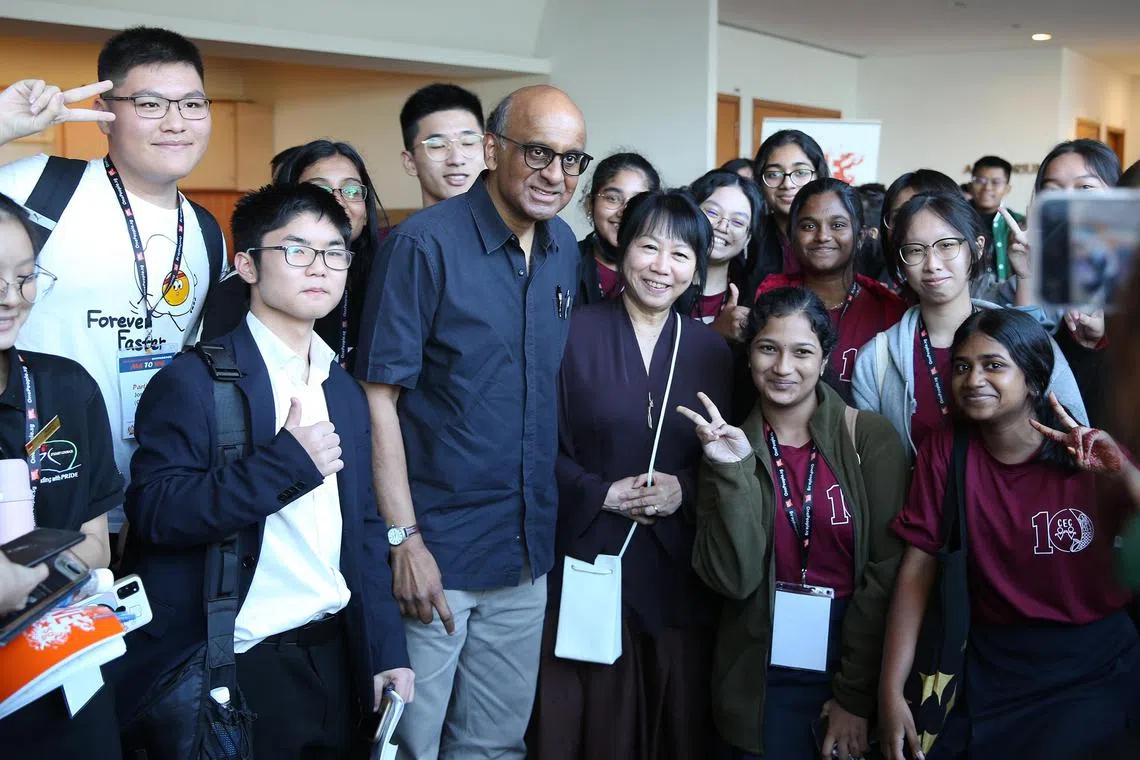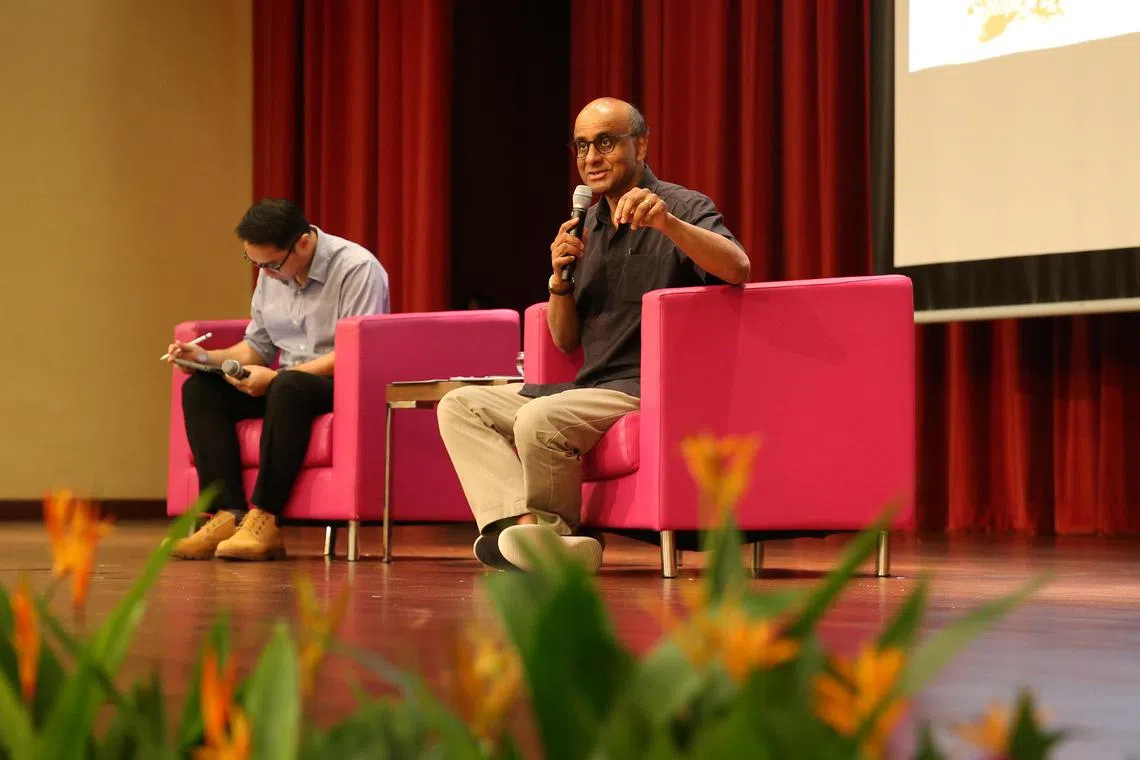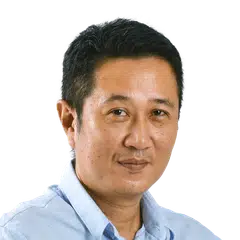Hold to the idea of multiculturalism even without common ground, Tharman tells youth
Sign up now: Get ST's newsletters delivered to your inbox

The important thing is to ensure that a pluralistic society does not become a divided society, former senior minister Tharman Shanmugaratnam said.
ST PHOTO: ZAIHAN MOHAMED YUSOF
Follow topic:
SINGAPORE - It takes work to learn to listen to people with differing views, but even if no common ground can be reached, Singaporeans can still hold to the idea of multiculturalism and accept that they live in a diverse society.
The important thing is to ensure that a pluralistic society does not become a divided society, former senior minister Tharman Shanmugaratnam told a young audience on Saturday as he fielded their questions on race, religion and threats to Singapore’s multiculturalism.
More than 200 young people attended the hour-long dialogue at the ITE College East auditorium, held as part of the HarmonyWorks! Conference 2023 organised by OnePeople.sg.
Earlier, they had broken into smaller groups to discuss issues such as casual racism, woke culture on social media and strengthening of local and migrant relations.
Mr Tharman, who recently resigned from politics to run in the presidential election
“And some people have very strong views on issues which are different from other people,” said Mr Tharman. “This is inevitable, (the) question is how we deal with it. How do we ensure that a more pluralistic society, a society with more diverse views, does not become a more divided society?”
He said the answer begins with early education, developing the ability to have civic discourse, to listen to each other, understand each other’s differences, and try to find common ground.
He added: “...when you can’t find common ground because you really have different views that are not so easily reconciled, accepting those differences but remaining Singaporean together, a diverse group of Singaporeans with so much that is still in common that we believe in multiracialism.”
A discussion group on the challenges faced by migrant workers in trying to integrate in Singapore raised language, particularly the use of English, as a barrier.
Brent Matthew, 17, a student ambassador from ITE College East, said: “One of the things my group agreed on was that in order to further integrate our migrant workers, (we should) form bonds and relationships with them.”
Mr Tharman welcomed the idea of having English language courses for migrants that can be conducted at the community clubs.
He challenged Singaporeans to not only step out of their comfort zones, but also to extend their comfort zones.
“People (come) from different walks of life, and very different education levels, different income levels,” said Mr Tharman. “We need to have that ease of interaction, ease of friendship and make that a much broader comfort zone that makes us Singaporeans.”

Mr Tharman Shanmugaratnam (right) answers questions raised by the youth at the HarmonyWorks! Conference moderated by Mr Ahmad Lutfi (left).
ST PHOTO: ZAIHAN MOHAMED YUSOF
Broadening a person’s comfort zone has to start at a young age. Social mixing between students of different races, religions and socio-economic backgrounds is very important, he said.
“That twice-a-week CCA (co-curricular activity), the regular class you go to twice a week, and you’re together in the same classroom, the informal activities of going out together regularly,” said Mr Tharman. “It’s only through that regularity, over a period of time, that your comfort zone actually expands.”
Asked by a student if a racial divide still exists in Singapore, Mr Tharman replied that “race was in the air” in the old days, even if people were not unfriendly.
“It was a daily occurrence when I took the bus,” he added. “As the only one at the bus stop, the bus did not stop for me quite often. That was normal. That was the type of society we were in.”
But it is different today, as such “microaggression” can be confronted and stamped out, he said.
Singapore has made some progress in schools where some activities and sports are traditionally mono-ethnic, said Mr Tharman, who is versed in Chinese calligraphy and regards his passion for the art form as part of his identity.
“We just stuck with the idea that certain games are for certain ethnic groups, and that’s just become a norm,” he said. In the international sporting arena, however, games are played against different nationalities. “It can be changed. And I’ve seen schools that are deliberately changing.”
“But we should be quite deliberate, not in a quota-based fashion, but in an encouraging way,” added Mr Tharman. “To make sure that those who are not normally associated with a sport or dance... bring them in and bring them in from young. They will do just as well.”


